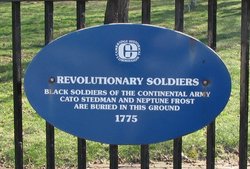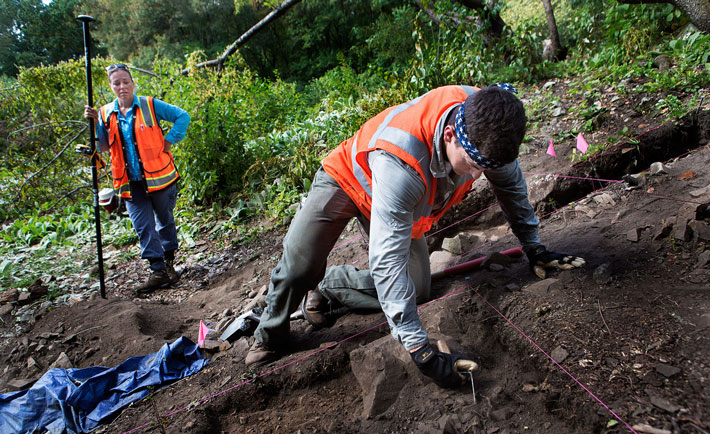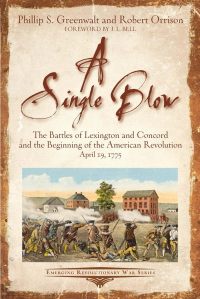The Rev. John Lee Watson was pretty relentless in arguing his claim that
John Pulling, not
Robert Newman, had hung the lanterns in
Old North Church on 18 Apr 1775.
On 20 July 1876, Watson
published his letter in the
Boston Daily Advertiser. In November he sent an updated and corrected version of that letter to Charles Deane, corresponding secretary of the
Massachusetts Historical Society, who endorsed his conclusion and entered the letter into the society’s
Proceedings.
The following year, a
pamphlet titled
Paul Revere’s Signal: The True Story of the Signal Lanterns in Christ Church, Boston appeared. That reprinted Watson’s letter and the M.H.S. discussion of it. Watson published an expanded edition in 1880. (In addition to arguing for Pulling’s participation, he also disputed the mistaken belief that the signal had been sent from the
Old North Meeting-House instead of what had become known as the Old North Church.)
Most of the evidence to support Pulling’s participation was indirect, based on his documented role in
other Patriot activism. Pulling was a member of the North End
Caucus. He was elected to
town offices: clerk of the market, warden,
fireward, committee to supply the poor, committee to enforce the
Continental Congress’s Association. After the
siege, he served on the town’s wartime “Committee of Correspondence, Safety & Inspection” alongside
Paul Revere.
In 1777 Pulling was a captain and conductor or commissary of ordnance in Col.
Thomas Crafts’s Massachusetts
artillery regiment. Basically that regiment was how middle-aged Sons of Liberty from Boston’s mechanics class helped to fight the war. (Revere was second-in-command.) In addition, starting in 1761, Pulling intermittently attended events of the St. Andrew’s Lodge of
Freemasons.
Pulling’s Whiggish work was somewhat unusual in that he was an
Anglican, even at times a warden and vestryman of Christ Church. But of course his access to that church’s tall steeple would have made him valuable on 18 Apr 1775.
In 1878, a defender of the Newman family claim hit back at the pro-Pulling argument. William W. Wheildon published his
History of Paul Revere’s Signal Lanterns, April 18, 1775, in the Steeple of the North Church from his
press in
Concord. He listed more than a dozen people who had lived in the North End before and after the war and testified that it was common knowledge that Newman had hung the signal lanterns. (Like Watson, Wheildon also spoke up for Old North Church, not Old North Meeting-House, as the source of the signals.)
There’s clear evidence that Newman was indeed the sexton at Christ Church in 1775 and for years afterward (until he was
criticized for charging visitors money to see the body of Maj.
John Pitcairn in the crypt). And who besides the sexton would have the church keys and knowledge of the stairs to the steeple?
In this historical debate, Newman was the inside candidate. His family had remained in the North End and first got the attention of the Christ Church rector. Though Pulling had returned to the North End after the siege, by the 1870s his descendants were more scattered.
On the other hand, the Pulling faction had the advantage of class. The Newmans didn’t publish their own accounts. Pulling’s relatives did, the most vocal being clergymen. Pulling had been a respected merchant. In contrast, church sextons like Newman were seen as poor, menial, and dependent. “Are sextons, as a class, so intelligent and so reliable as to have been chosen for and intrusted with such an important affair?” Mary Orne Jenks sniffed. In this period the M.H.S. was at its most Brahmin, and it’s no surprise that institution lined up on the Pulling side.
Both parties in the debate claimed that their man was the “friend” that Revere asked to send the signal. Neither was actually able to provide evidence for friendship aside from all three men living in the North End in the same years. But Pulling was in his late thirties, closer to Revere’s age, while Newman was only twenty-three.
Both sides had dramatic stories to tell of their man carefully hanging the lanterns on 18 April, evading the royal authorities that night, and then being hunted down. But there’s no documentary evidence from 1775 to support either of those traditions.
And in the end, this whole debate was over very little.
TOMORROW: Why the Newman-Pulling dispute really doesn’t matter.


















